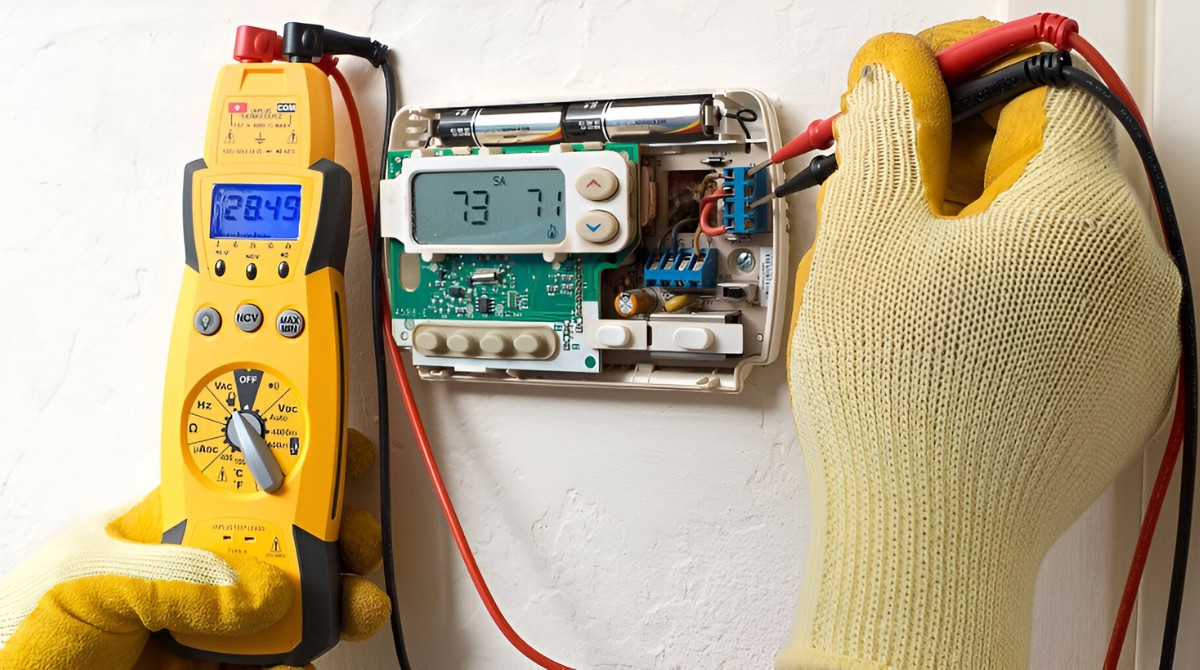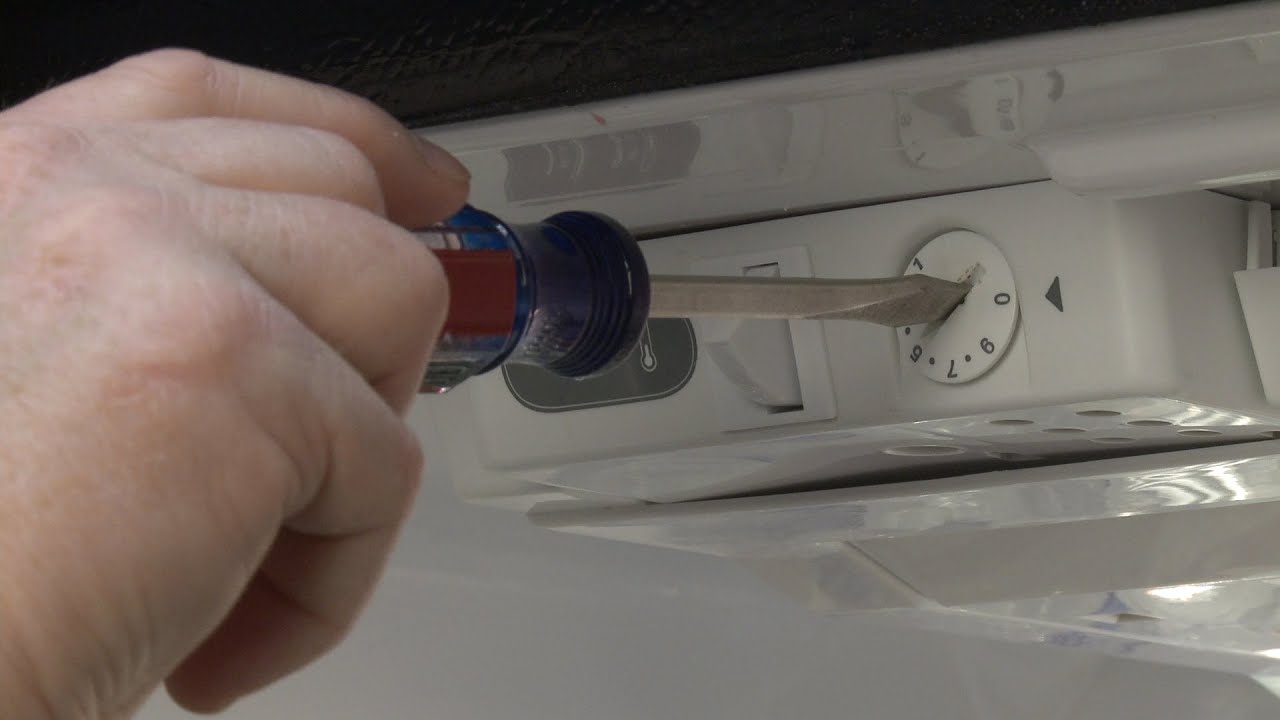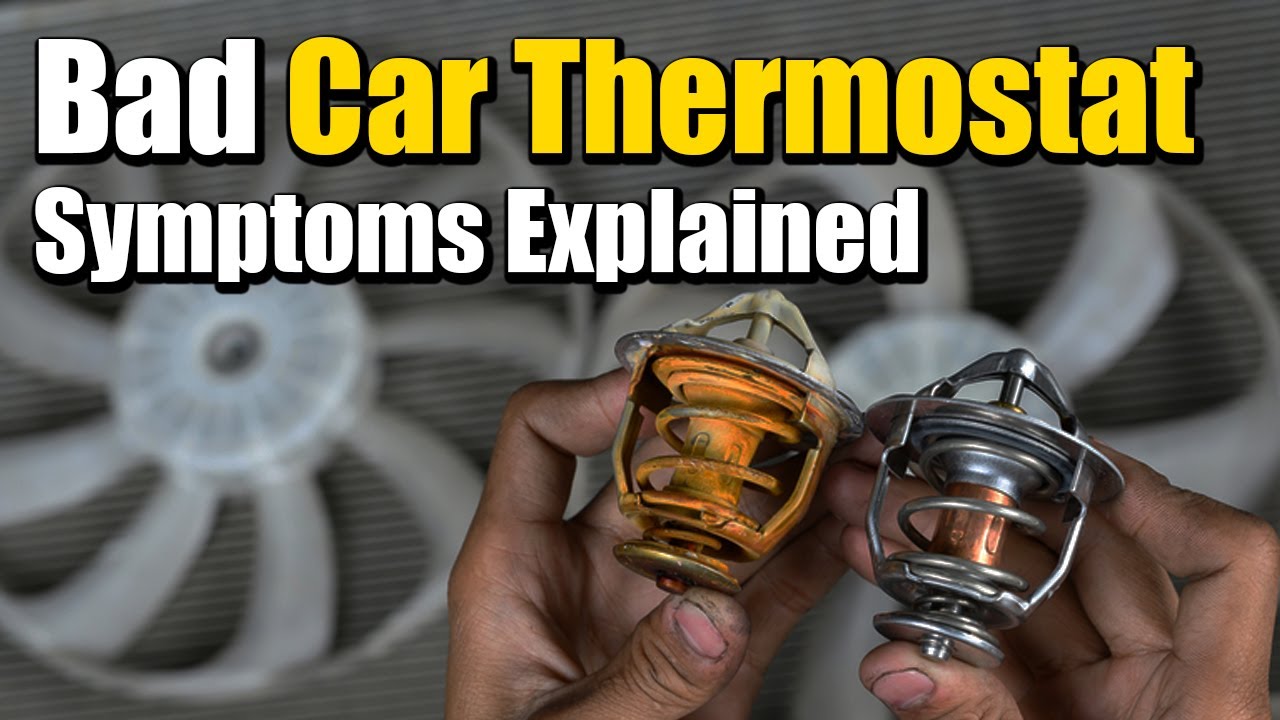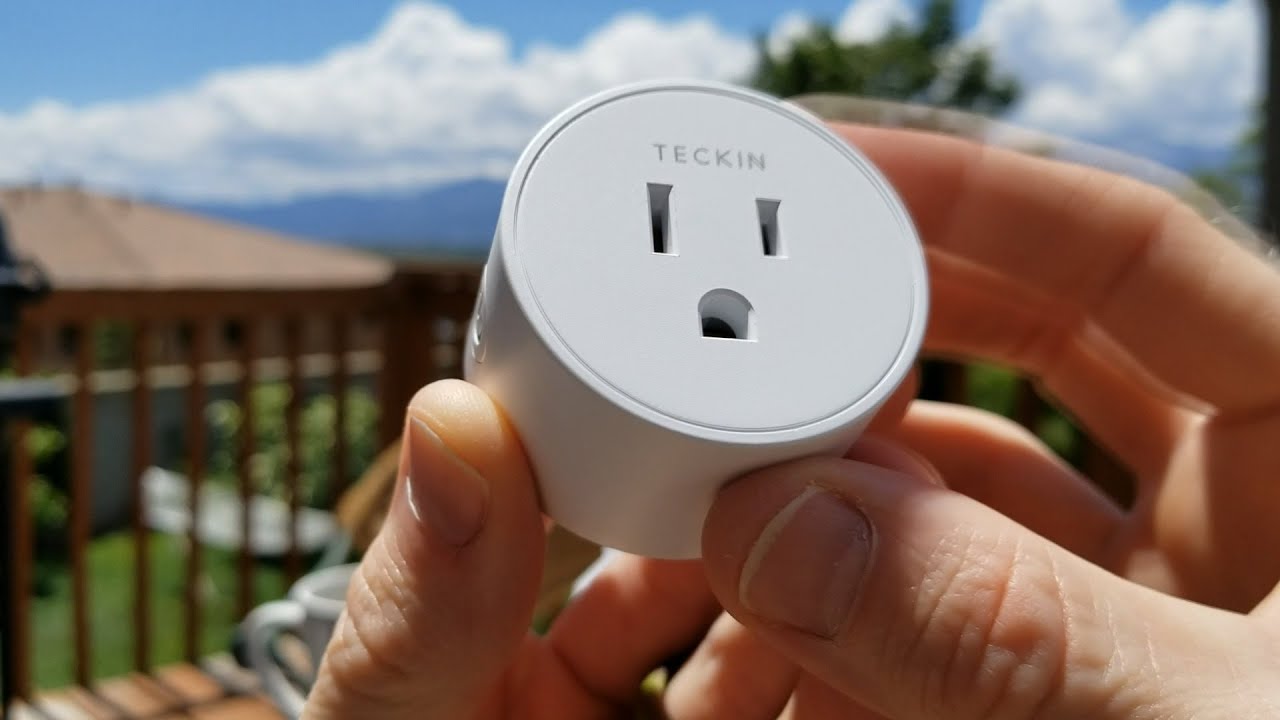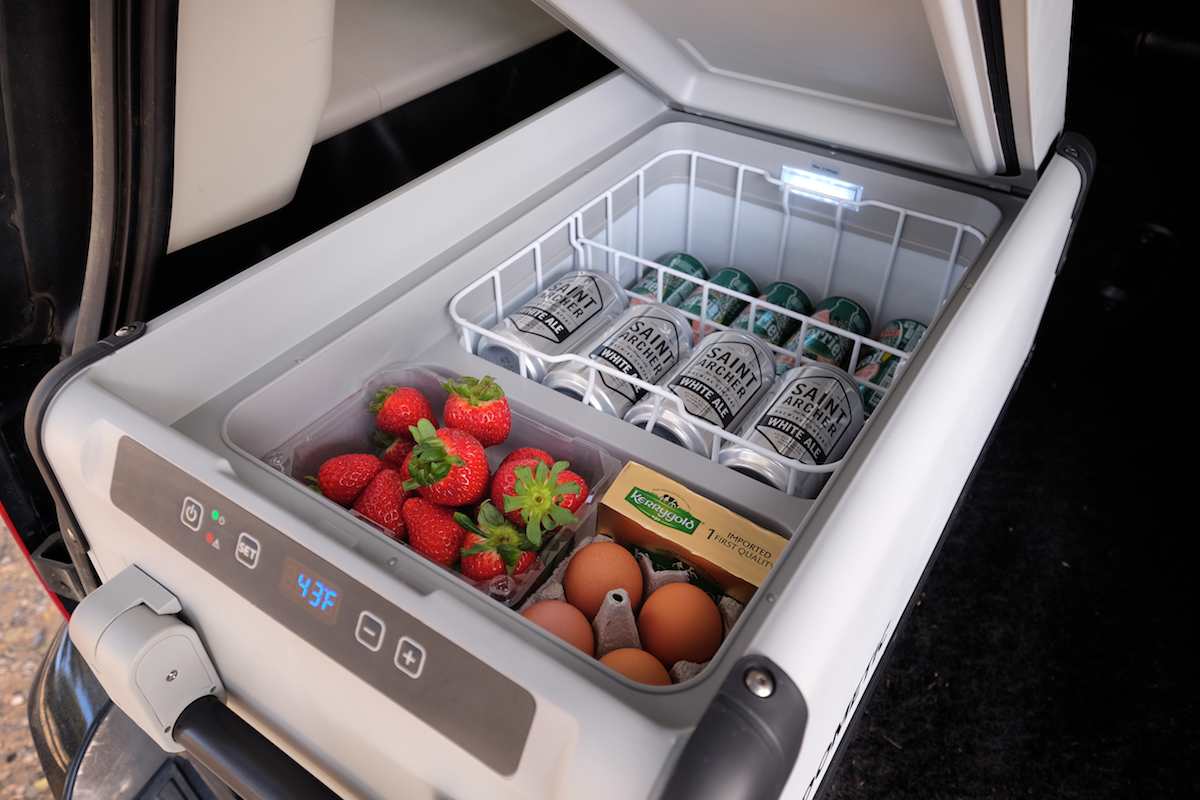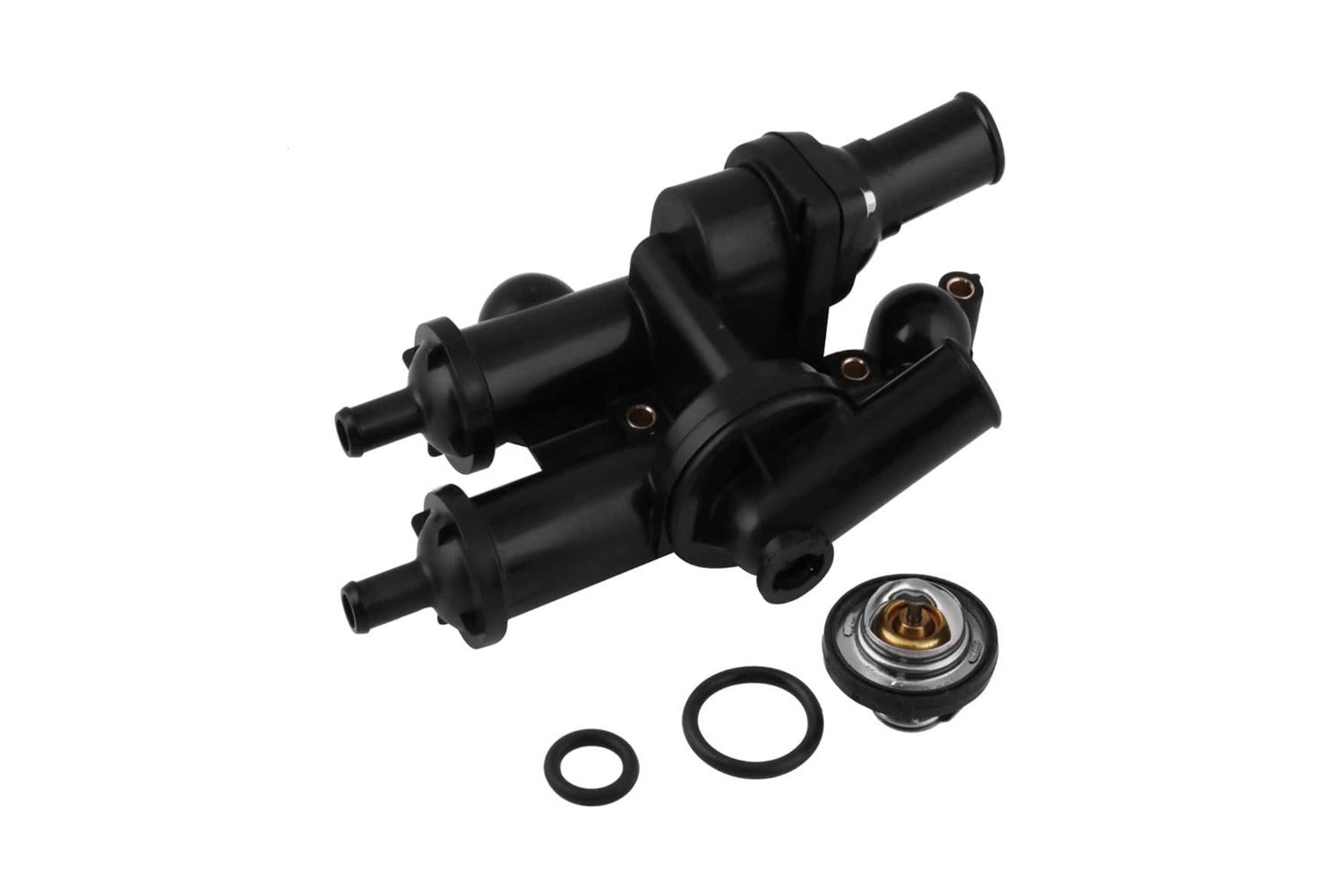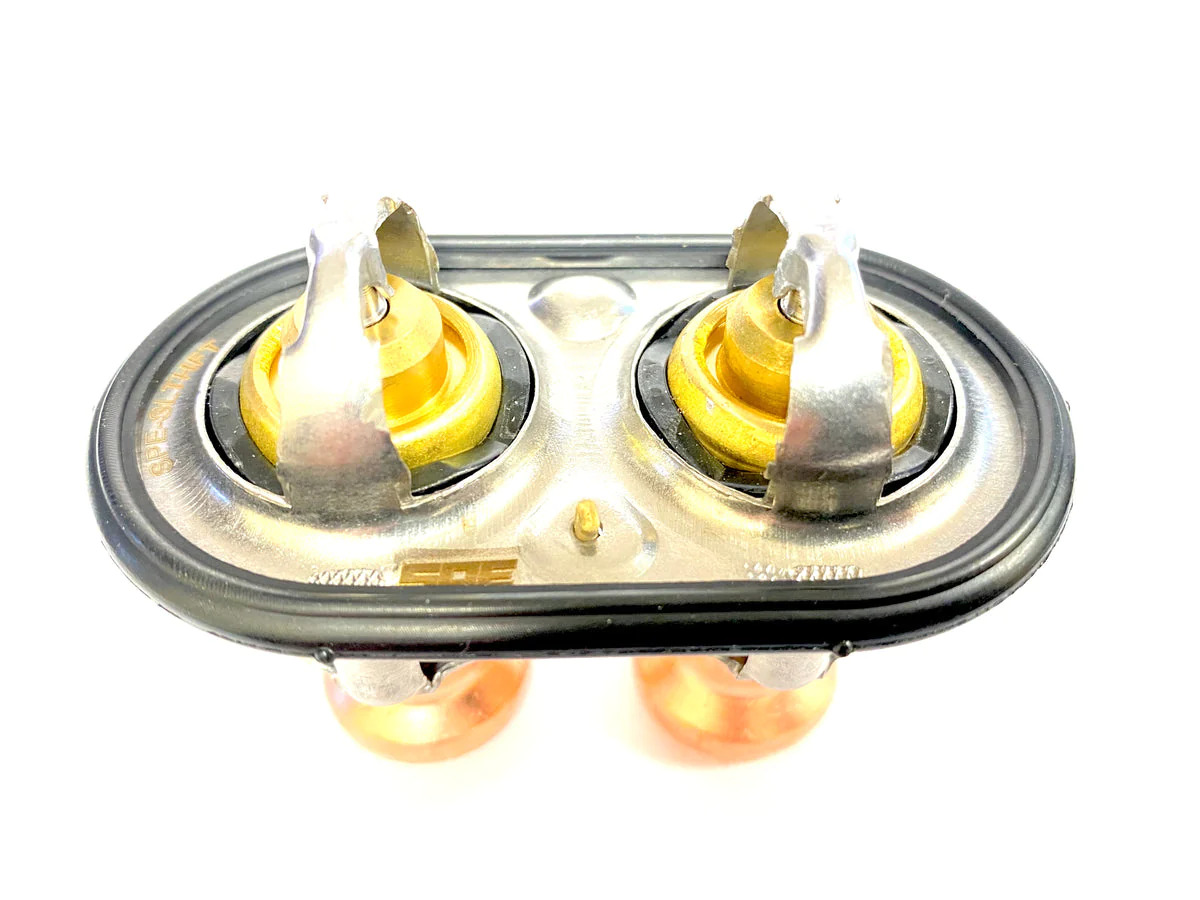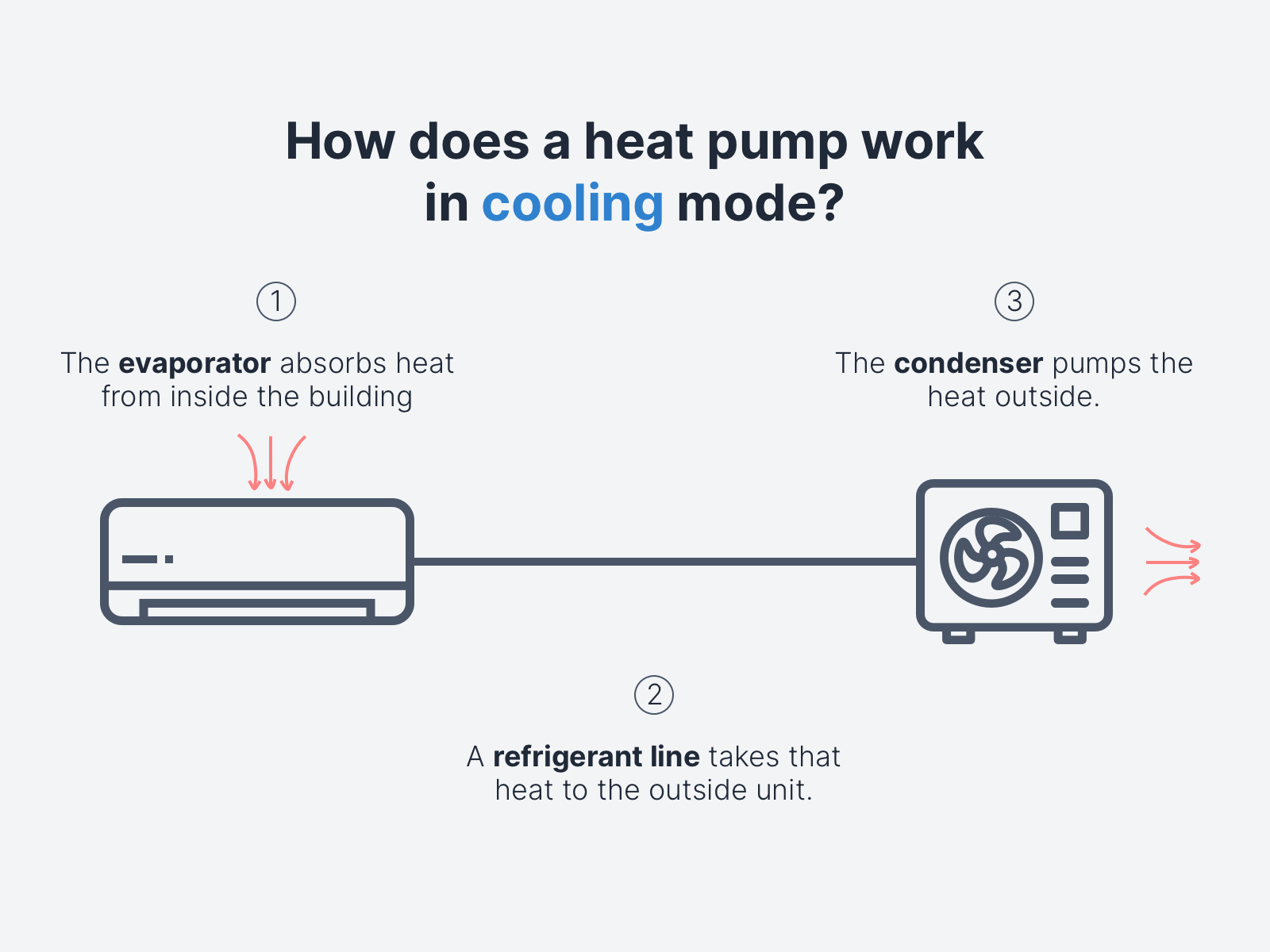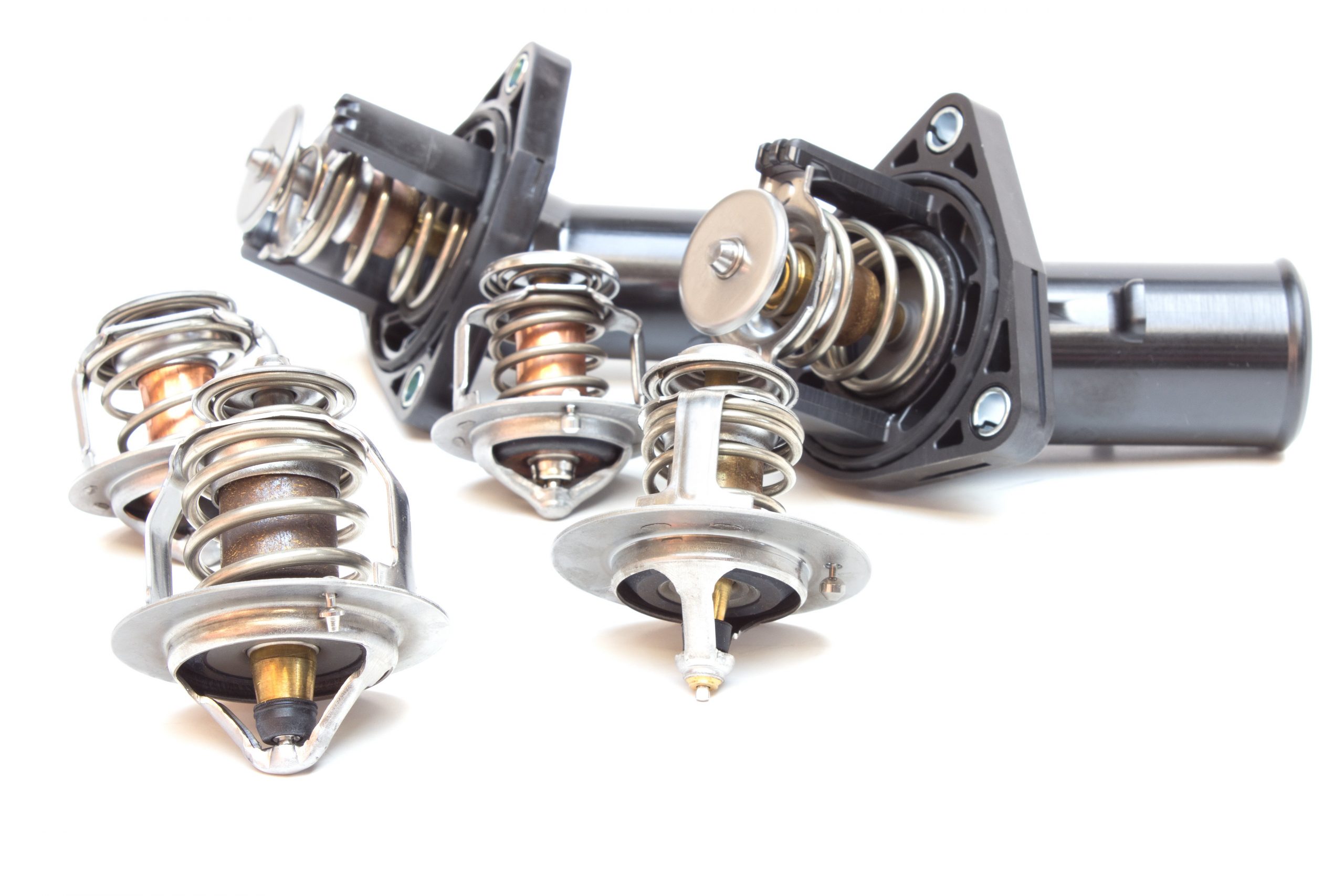Common Thermostat Problems
Thermostats are essential devices that help regulate the temperature in your home or office. However, like any electronic device, they can encounter problems from time to time. Understanding common thermostat problems can help you troubleshoot and potentially resolve issues on your own or know when it’s time to call a professional HVAC technician.
Here are some of the most common thermostat problems:
- Inaccurate Temperature Reading: One of the most frustrating issues is when your thermostat displays the wrong temperature. This can lead to discomfort and inefficient heating or cooling. Inaccurate temperature readings can occur due to a variety of reasons, such as a faulty sensor or improper thermostat placement.
- Unresponsive Controls: If your thermostat is unresponsive and fails to turn on or adjust the temperature when you make changes, it could be due to a power issue, dead batteries, or wiring problems. Ensuring that the thermostat is receiving power and the batteries are charged can help identify the cause.
- Short Cycling: Short cycling occurs when your heating or cooling system turns on and off too frequently, resulting in inefficient operation and increased energy consumption. This issue can be caused by a malfunctioning thermostat, improper system settings, or a problem with the HVAC unit itself.
- Thermostat Not Following Schedule: Many modern thermostats allow you to program a schedule for heating and cooling. If your thermostat is not following the programmed schedule, it could be due to a software glitch, incorrect settings, or a faulty component.
- Wiring Problems: Faulty or loose wiring connections can cause communication issues between the thermostat and HVAC system, leading to ineffective temperature control. Identifying and fixing any wiring problems can restore proper functionality.
If you encounter any of these common thermostat problems, it’s important to address them promptly to avoid discomfort and potential damage to your heating or cooling system. In the next section, we will discuss the role of HVAC technicians in thermostat repair and when it’s necessary to call in the professionals.
The Role of HVAC Technicians in Thermostat Repair
When it comes to thermostat repair, HVAC (heating, ventilation, and air conditioning) technicians play a crucial role in diagnosing and resolving issues with your thermostat. While some thermostat problems may be minor and can be addressed by homeowners, there are situations where professional expertise is necessary.
HVAC technicians possess the knowledge and experience to handle complex thermostat repair tasks. Here’s how they can assist you:
- Diagnosing the Problem: HVAC technicians are skilled in troubleshooting thermostat issues. They can accurately identify the root cause of problems and determine whether it’s a faulty thermostat, wiring issue, sensor malfunction, or something else entirely. Their expertise allows for efficient and effective problem-solving.
- Repairing or Replacing Components: If a specific component of your thermostat is malfunctioning, HVAC technicians have the ability to repair or replace it. Whether it’s a faulty sensor, a worn-out thermostat unit, or a wiring problem, they have the necessary tools and know-how to rectify the issue.
- Ensuring Compatibility: If you’re upgrading your thermostat or replacing it with a new model, HVAC technicians can ensure compatibility between the thermostat and your HVAC system. They will make sure the wiring is correctly connected, and the thermostat is programmed and calibrated accordingly.
- Testing and Calibration: After repairing or replacing components, HVAC technicians perform thorough testing and calibration to ensure that your thermostat functions properly. They will check temperature accuracy, program settings, responsiveness, and other essential aspects to guarantee optimal performance.
- Providing Maintenance and Advice: HVAC technicians can offer valuable maintenance tips to prevent future thermostat issues. They may recommend regular filter changes, thermostat cleaning, and ways to optimize energy efficiency. Their advice can help prolong the lifespan of your thermostat and maximize its performance.
While minor issues like changing batteries or adjusting settings can be handled by homeowners, seeking professional assistance is crucial for complex problems or if you’re unsure about troubleshooting certain aspects of your thermostat. In the next section, we will discuss when it’s necessary to call a professional for thermostat repair.
When to Call a Professional for Thermostat Repair
While some thermostat issues can be resolved through simple troubleshooting steps, there are situations where it’s necessary to call a professional HVAC technician for thermostat repair. Here are some indicators that it’s time to seek professional assistance:
- Complex Issues: If you’ve followed the troubleshooting steps provided by the thermostat manufacturer or tried basic fixes, but the problem persists, it’s a sign that a more complex issue may be at hand. HVAC technicians have the expertise to diagnose and repair intricate problems that may require specialized knowledge or equipment.
- Electrical or Wiring Problems: Dealing with electrical components can be dangerous if you’re not experienced or knowledgeable. If you suspect that there’s an electrical issue or a problem with the thermostat wiring, it’s best to leave it to the professionals. They have the necessary training to handle electrical components safely and ensure proper wiring connections.
- System Compatibility: When upgrading or replacing your thermostat, it’s essential to ensure compatibility with your HVAC system. HVAC technicians can evaluate your current setup, check the compatibility of the new thermostat, and make any necessary adjustments or installations to ensure a seamless integration and optimal performance.
- Lack of Technical Knowledge: If you’re unfamiliar with the inner workings of thermostats or HVAC systems, attempting DIY repairs may lead to further complications or even damage. HVAC technicians have extensive knowledge and experience in thermostat repair, allowing them to accurately diagnose and fix problems while minimizing the risk of errors.
- Manufacturer Warranty: If your thermostat is still under warranty, attempting DIY repairs can potentially void the warranty. It’s advisable to call a professional for repair work to ensure that the warranty remains valid in case any further issues arise.
Calling a professional HVAC technician for thermostat repair provides the reassurance that the problem will be addressed correctly and efficiently. They have the necessary skills, equipment, and experience to troubleshoot and resolve complex issues while ensuring your safety and the optimal performance of your thermostat. However, if you’re confident in your troubleshooting abilities and the issue is minor, you can attempt DIY repairs using recommended guidelines and resources.
DIY Thermostat Repair Tips
While some thermostat issues require professional assistance, there are certain problems that you might be able to address on your own with some basic troubleshooting. Here are a few DIY thermostat repair tips to help you resolve common issues:
- Check Power and Batteries: Ensure that your thermostat is receiving power. Check the circuit breaker or fuse box to ensure it’s properly connected. If your thermostat operates on batteries, replace them if they’re dead or low.
- Thermostat Placement: Verify that your thermostat is installed in an appropriate location. It should be away from direct sunlight, drafts, and heat sources, as it can affect temperature accuracy. Ensure that it’s mounted level and securely attached to the wall.
- Reset or Restart: Try resetting or restarting your thermostat. This can be done by removing the thermostat from its base or turning off the power for a few minutes before turning it back on. Sometimes, a simple reset can resolve minor glitches or software issues.
- Check the Settings: Review the thermostat settings to make sure they’re configured correctly. Ensure that the heating and cooling modes are set to your preferences and that the temperature differentials are appropriate.
- Clean and Maintain: Dust and debris accumulation can affect the performance of your thermostat. Regularly clean the thermostat and its surroundings using a soft cloth or brush. Additionally, replace the air filters in your HVAC system regularly, as dirty filters can impact thermostat functionality.
- Upgrade Firmware or Software: If your thermostat model allows for firmware or software updates, check the manufacturer’s website for any available updates. Updating the firmware can address known bugs or issues and improve overall performance.
These DIY thermostat repair tips can be helpful for minor issues or when you want to troubleshoot before calling a professional. However, if these steps don’t resolve the problem or if you’re uncomfortable performing these tasks, it’s best to seek the assistance of a professional HVAC technician who has the necessary expertise and tools to handle complex repairs.
Choosing the Right Thermostat Repair Service Provider
When it’s time to call a professional for thermostat repair, selecting the right service provider is crucial to ensure a satisfactory and efficient resolution to your thermostat issues. Here are some factors to consider when choosing a thermostat repair service provider:
- Experience and Expertise: Look for a service provider with experience in thermostat repair. An established company with a track record of successfully resolving thermostat issues is more likely to provide quality service and ensure proper repairs.
- Certifications and Licenses: Verify that the technicians working for the service provider are appropriately certified and licensed. This ensures that they have the necessary knowledge and skills to handle thermostat repairs and comply with the industry standards and regulations.
- Reputation and Reviews: Research the service provider’s reputation and read customer reviews and testimonials. Positive reviews and feedback indicate customer satisfaction and reliability, while negative reviews can be a warning sign of poor service quality.
- Response Time and Availability: Consider the service provider’s response time and availability. It’s important to choose a company that can accommodate your schedule and provide prompt service, especially if you’re dealing with a thermostat problem that requires immediate attention.
- Insurance and Guarantees: Ensure that the service provider has proper liability insurance to protect you in case of any unforeseen damages. Additionally, inquire about any guarantees or warranties provided for the repair work to give you peace of mind.
- Cost and Transparency: Compare the pricing structure of different service providers and ensure they are transparent about their costs. Request an estimate and make sure there are no hidden fees or charges. Remember that the cheapest option may not always be the best, so consider the overall value and quality of service provided.
Take your time to research and gather information about different thermostat repair service providers before making a decision. This will help you choose a reliable and reputable company that can efficiently diagnose and repair your thermostat issues, ensuring optimal performance and comfort in your home or office.
Factors Affecting the Cost of Thermostat Repairs
When it comes to thermostat repairs, the cost can vary depending on several factors. Understanding these factors can help you anticipate the potential expenses associated with repairing your thermostat. Here are some of the key factors that can affect the cost of thermostat repairs:
- Type of Thermostat: The type of thermostat you have can impact repair costs. Basic thermostats with fewer features and manual controls typically have lower repair costs, while more advanced smart thermostats with complex technology may require specialized repairs that could be more expensive.
- Nature and Extent of the Problem: The specific issue affecting your thermostat will influence the repair cost. Minor problems like a malfunctioning sensor or loose wiring can usually be resolved at a lower cost. However, more significant issues like a faulty circuit board or a complete thermostat replacement may require more extensive repairs and incur higher costs.
- Required Parts: If your thermostat requires replacement parts, the cost of those parts will contribute to the overall repair expenses. The cost of parts can vary depending on the thermostat model, brand, and availability.
- Labour Costs: The cost of labor for thermostat repairs can vary depending on the service provider, geographic location, and the complexity of the repair task. Some companies may charge a flat fee, while others charge an hourly rate. It’s essential to inquire about labor costs upfront to avoid any surprises.
- Additional Services: If the thermostat repair involves additional services, such as diagnosing and fixing underlying HVAC system issues, the cost may be higher. This could include inspecting ductwork, testing other components, or making adjustments to ensure optimal system performance and compatibility with the repaired thermostat.
- Emergency Service: If you require immediate or after-hours thermostat repair service, emergency rates may apply. Emergency service calls are typically more expensive due to the urgency and additional resources required to address the problem promptly.
It’s important to discuss the details of the repair and associated costs with the thermostat repair service provider beforehand. Requesting a written estimate that outlines the expected costs, including parts and labor, can help you make an informed decision. Remember that investing in high-quality repairs from professionals can save you money in the long run by ensuring the longevity and efficiency of your thermostat.
How to Prevent Thermostat Problems in the Future
Preventing thermostat problems can help you avoid the inconvenience and expense of repairs. By following some preventive measures, you can maintain the optimal functionality of your thermostat and prolong its lifespan. Here are some tips to prevent thermostat problems in the future:
- Regular Maintenance: Schedule regular maintenance for your HVAC system, including inspections and servicing. A professional technician can check your thermostat as part of the maintenance routine, ensuring that it’s in good working condition and detecting any potential issues early on.
- Keep the Area Clean: Ensure that the area around your thermostat is clean and free of dust or debris. Regularly dust the thermostat and its surroundings to prevent any obstruction that may affect its performance.
- Optimal Placement: Install your thermostat in an appropriate location away from direct sunlight, drafts, and heat sources. This will help prevent temperature variations and ensure accurate readings.
- Regularly Change Batteries: If your thermostat operates on batteries, make it a habit to replace them regularly. Low batteries can cause the thermostat to malfunction or display incorrect readings.
- Avoid Tampering: Refrain from constantly adjusting the thermostat settings. Frequent temperature changes can put unnecessary strain on your HVAC system and may lead to premature wear and tear.
- Upgrade and Update: Consider upgrading to a newer, more advanced thermostat model if your current one is outdated. Newer thermostats often come with improved features and better energy efficiency. Additionally, check for firmware or software updates regularly and install them to keep your thermostat operating smoothly.
- Professional Installation: When installing a new thermostat or replacing an existing one, hire a professional technician for proper installation. This ensures correct wiring connections, calibration, and compatibility with your HVAC system.
- Temperature Monitoring: Keep an eye on your thermostat readings and be aware of any sudden changes or inconsistencies in temperature. If you notice any irregularities, address them promptly to prevent further problems.
By following these preventive measures, you can minimize the risk of thermostat problems and maintain the efficiency of your HVAC system. Remember to always consult a professional HVAC technician if you encounter any major issues or if you’re uncertain about any repairs or maintenance tasks.
Frequently Asked Questions about Thermostat Repair
Here are some frequently asked questions about thermostat repair:
- Can I repair my thermostat myself?
- How much does thermostat repair cost?
- How long does thermostat repair usually take?
- When should I replace my thermostat instead of repairing it?
- How do I know if my thermostat is compatible with my HVAC system?
- How often should I have my thermostat serviced?
- What can cause my thermostat to display inaccurate readings?
- Is it possible to control my thermostat remotely?
Some minor thermostat issues can be addressed through DIY troubleshooting, such as battery replacement or adjusting settings. However, for more complex problems or if you’re unsure about the repair process, it’s best to seek professional assistance.
The cost of thermostat repair can vary depending on factors like the type of thermostat, the specific problem, required parts, labor costs, and additional services. It’s advisable to get estimates from different service providers to compare prices and evaluate the best option.
The duration of thermostat repair depends on the nature and extent of the problem. Minor issues may be resolved within an hour, while more complex repairs or component replacements may take several hours or require multiple visits.
There are several factors to consider when deciding to replace a thermostat. If your thermostat is outdated, inefficient, or beyond repair, it’s a good idea to invest in a new one. Additionally, if you’re upgrading your HVAC system or want to take advantage of advanced features, replacing the thermostat may be the best option.
To ensure compatibility, it’s recommended to consult with an HVAC professional before purchasing or installing a new thermostat. They can assess your HVAC system and recommend a compatible model that meets your heating and cooling needs.
Regular HVAC system maintenance, which includes checking the thermostat, should be performed at least once a year. However, it’s advisable to consult the manufacturer’s recommendations or discuss with an HVAC technician for a more tailored maintenance schedule based on your specific system and usage.
Inaccurate temperature readings can be caused by several factors, such as a faulty sensor, improper thermostat placement, issues with the HVAC system, or even dirt and debris around the thermostat. It’s best to have a professional technician diagnose the issue to determine the exact cause and provide the appropriate solution.
Many thermostats today have remote control capabilities through mobile apps or smart home systems. These allow you to adjust temperature settings and monitor your thermostat from anywhere with internet access. However, not all thermostats have this feature, so be sure to choose a model that offers remote control if it’s important to you.
If you have any further questions or concerns about thermostat repair, it’s recommended to contact a professional HVAC technician who can provide expert advice and assistance.







